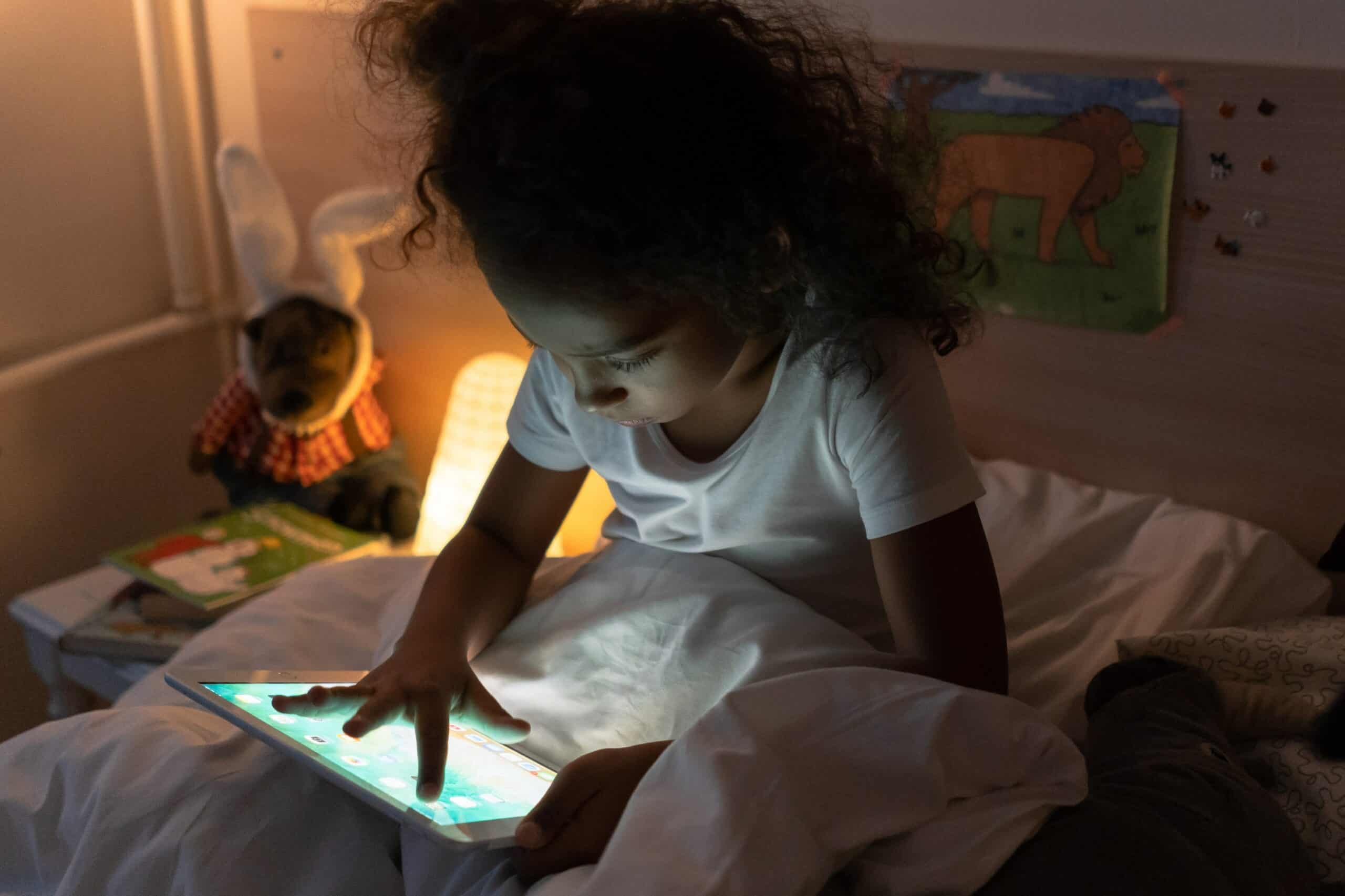Quick check: how many hours have you spent looking at a screen in the past 24 hours? How about the past 48 hours? We have all likely heard the adverse effects that increased screen time has on development. Still, it is astonishing to learn just how much time Americans devote to screens in our everyday lives and what types of behaviors are developing because of that screen time, particularly when looking at youth development.
Before the pandemic, Americans were staring at screens for an average of 11 hours per day; however, during the pandemic, this figure skyrocketed to 19 hours per day (Reid, n.d.). While the most recent data suggests that Americans have since decreased their daily screen time to an average of 7 hours, this is still much higher than the two hours that physicians recommend for best wellness practices for individuals from age 5 to adults (Moody, 2022). While some screen time can be considered more beneficial, such as making a video call to a long-distance relative, most of the screen time that youth are engaging in can be categorized as being non-stimulating for healthy development
Unfortunately, the youth in our country is following the example set by their caregivers; a study through the Journal of the American Medical Association compiled data showing that 96.6% of children ages 0-4 had used mobile devices, and 75% of these children had their own personal device (OSF HealthCare, 2020). In 2020, youth ages 11-14 clocked in at an average of six hours per day in front of a screen. The consequences of this increased screen time are just beginning to impact our adolescents, with youth being less physically active, experiencing sleep disturbances, increased headaches and eye strain, increased moodiness, and decreased communication skills (Cleveland Health, 2022).
Providers and caregivers are seeing these signs in their teenagers and trying to counteract the effects of too much screen time. Still, the question remains of how to successfully replace screen time with enriching activities that their youth will enjoy. Rather than be unrealistic about enforcing no screen time outside of homework, here are a few strategies for creating appropriate screen time boundaries and encouraging screen time interaction with your youth (Cleveland Clinic, 2022).
- Set a good example: Children replicate what they see; if you are on your phone at the dinner table or consistently watching television, odds are they will follow your lead.
- Have designated no screen locations and times: Outline specific areas and times where phones and screens will not be allowed, such as no phones at the dinner table or no screens until homework is finished. The Cleveland Clinic also strongly recommends cutting off screen time at least an hour before bed to avoid sleep disturbances.
- Co-watching: Whether they are two or teenagers, co-watching can be valuable family bonding time and allows caregivers to explain what they are watching to younger children to enhance their learning.
- Set consistent boundaries: As any caregiver can attest, setting new rules and consequences is never easy, and there are bound to be learning curves. Experts encourage caregivers to stay the course and consistently reaffirm the screen time boundaries by following through on the established consequences for breaking those boundaries.
If you are still struggling to communicate and establish boundaries with your 10-14-year-old and need suggestions on family activities, check out our current PROSPER locations to see if there is a Strengthening Families Program: 10-14 session near you. These free sessions offer evidence-based, family-building opportunities for caregivers and youth to learn how to effectively communicate with each other while growing together as a family.
REFERENCES
Team, Cleveland Health. (2022). How much screen time for kids is too much? Cleveland Clinic. https://health.clevelandclinic.org/how-screen-time-can-slow-your-childs-development/.
OSF HealthCare. (2020). Screen Time for Kids; How Much is Too Much? https://newsroom.osfhealthcare.org/screen-time-for-kids-how-much-is-too-much/.
Reid Health. (n.d.). Blog: How much screen time is too much for adults? https://www.reidhealth.org/blog/screen-time-for-adults.
Moody, R. (2022). Screen Time Statistics: Average screen time in US vs. the rest of the world. https://www.comparitech.com/tv-streaming/screen-time-statistics/.


